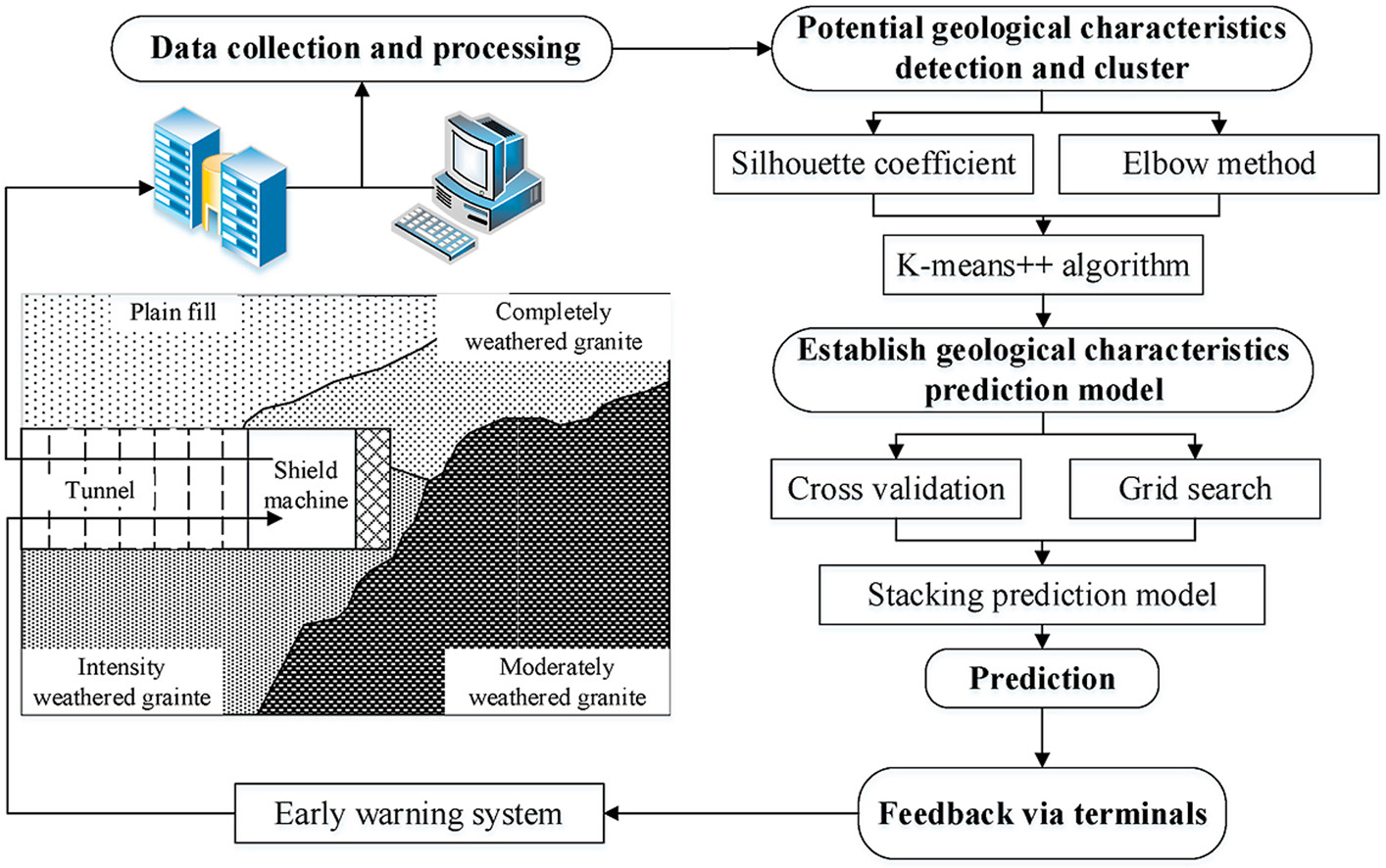JRMGE / Vol 14 / Issue 4
Prediction of geological characteristics from shield operational parameters by integrating grid search and K-fold cross validation into stacking classification algorithm
Tao Yan, Shui-Long Shen, Annan Zhou, Xiangsheng Chen
Show More
a MOE Key Laboratory of Intelligent Manufacturing Technology, Department of Civil and Environmental Engineering, College of Engineering, Shantou University,
Shantou, Guangdong 515063, China
b Discipline of Civil and Infrastructure, School of Engineering, Royal Melbourne Institute of Technology (RMIT), Victoria, 3001, Australia
c College of Civil and Transportation Engineering, Shenzhen University, Shenzhen, Guangdong 518060, China
2022, 14(4): 1292-1303. doi:10.1016/j.jrmge.2022.03.002
Received: 2022-01-10 / Revised: 2022-02-25 / Accepted: 2022-03-15 / Available online: 2022-04-14
2022, 14(4): 1292-1303.
doi:10.1016/j.jrmge.2022.03.002
Received: 2022-01-10
Revised: 2022-02-25
Accepted: 2022-03-15
Available online: 2022-04-14
This study presents a framework for predicting geological characteristics based on integrating a stacking classification algorithm (SCA) with a grid search (GS) and K-fold cross validation (K-CV). The SCA includes two learner layers: a primary learner's layer and meta-classifier layer. The accuracy of the SCA can be improved by using the GS and K-CV. The GS was developed to match the hyper-parameters and optimise complicated problems. The K-CV is commonly applied to changing the validation set in a training set. In general, a GS is usually combined with K-CV to produce a corresponding evaluation index and select the best hyper-parameters. The torque penetration index (TPI) and field penetration index (FPI) are proposed based on shield parameters to express the geological characteristics. The elbow method (EM) and silhouette coefficient (Si) are employed to determine the types of geological characteristics (K) in a K-means++ algorithm. A case study on mixed ground in Guangzhou is adopted to validate the applicability of the developed model. The results show that with the developed framework, the four selected parameters, i.e. thrust, advance rate, cutterhead rotation speed and cutterhead torque, can be used to effectively predict the corresponding geological characteristics.
Keywords: Geological characteristics, Stacking classification algorithm (SCA), K-fold cross-validation (K-CV), K-means++
Show Figure(s)
Supplementary Material
Share and Cite
Tao Yan, Shui-Long Shen, Annan Zhou, Xiangsheng Chen, 2022. Prediction of geological characteristics from shield operational parameters by integrating grid search and K-fold cross validation into stacking classification algorithm. J. Rock Mech. Geotech. Eng. 14 (4), 1292-1303.
Article Data
Author(s) Information
Tao Yan

Tao Yan obtained his BSc and MSc degrees in Civil Engineering from University of Shanghai for Science and Technology and Shanghai Jiao Tong University, China, in 2017 and 2020, respectively. Now, he is a collaborative PhD candidate in Geotechnical Engineering at Shantou University and Royal Melbourne Institute of Technology (RMIT University). His research interests include (1) dynamic interaction between shield tunnelling and soil or rock properties; (2) application of artificial intelligence for shield tunnelling; and (3) theoretical analysis and numerical simulation of shield excavation process in construction projects.

